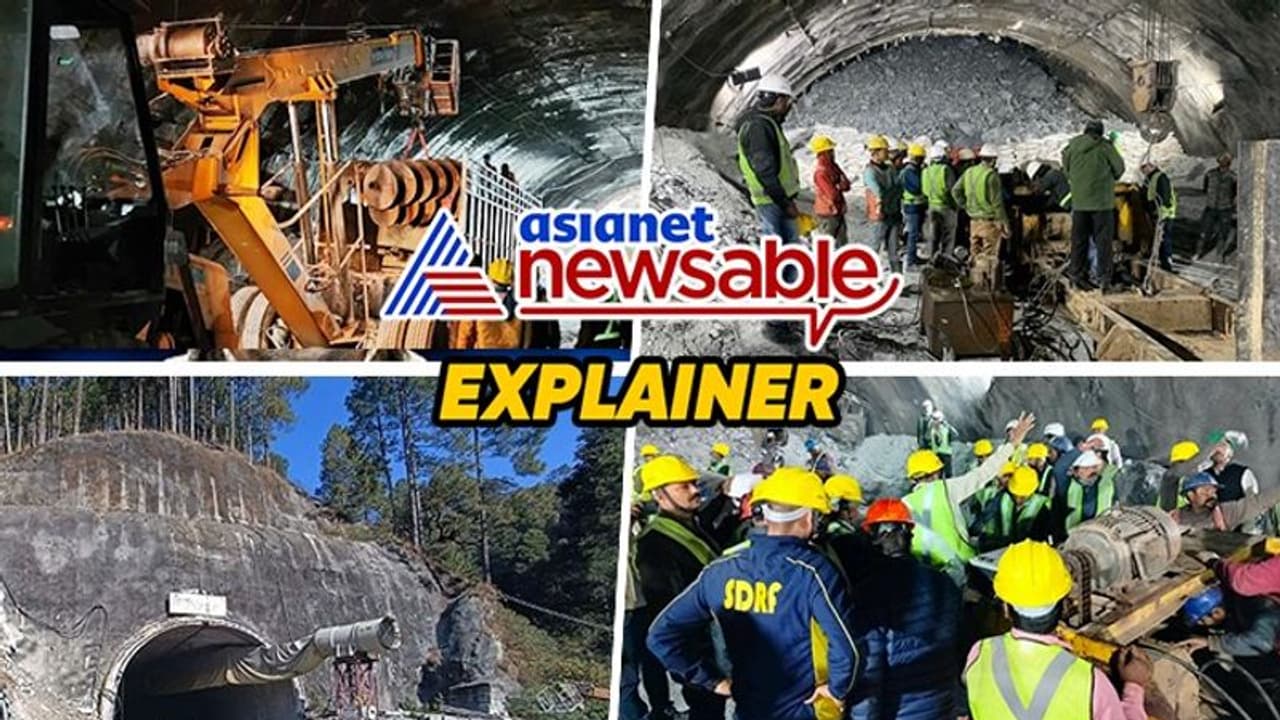Even as the government actively works to rescue 40 trapped workers in a tunnel under construction in Uttarakhand, experts emphasise on the necessity for a profound reconsideration of infrastructure development in the Himalayan region.
Efforts are underway by the government to rescue 40 workers trapped inside a tunnel under construction in Uttarakhand. However, an expert, Dr. Sudhir Krishna, former secretary of the Union Urban Development ministry, emphasizes the necessity of rethinking infrastructure development in the Himalayan region. The workers have been trapped for over 70 hours, facing challenges such as landslides, hindering rescue operations. Additional equipment is being brought in from Delhi to aid in the efforts.

Dr. Krishna highlights the complexities of the Himalayan region, characterized by predominantly soft rocks with occasional hard stable patches. Challenges in the rescue operation include landslides and land subsidence, the sinking of the ground due to various underground activities. The 4.5-km tunnel, which will connect Silkyara and Dandalgaon towns for the Uttarkashi-Yamunotri route, collapsed after a landslide, trapping the workers.
Also read: Uttarakhand tunnel tragedy enters day 4: Workers stage protest as rescue efforts persist
"Himalayan region comprises soft rocks in general. Only in patches, there are hard stable rocks. It's a difficult situation. There are multiple challenges (in rescue work), landslide is one, land subsidence is the second," Dr Krishna told NDTV.
Expressing concern and urging reflection on future development, Dr. Krishna stresses the need for collaboration between the state government, the central government, and experts to formulate a comprehensive plan for the ecologically fragile Himalayan region. He questions the urgency of projects like the Silkyara tunnel, part of the Char Dham project aiming to connect Badrinath, Kedarnath, Gangotri, and Yamunotri. The current crisis prompts him to call for a serious reconsideration of development priorities.
"Today's situation in Silkyara is an example that should make us think about the future. I hope and pray for those trapped and I am quite happy that the government is taking serious and sincere measures, but I am also anxious. We need to seriously think about development in the Himalayan region," Dr Krishna told NDTV, adding, "we are already late, but we should not delay this anymore."
Dr. Krishna emphasizes the importance of long-term planning, arguing that sustainable development in the Himalayan region requires a strategic vision. "The state government or the centre cannot do it alone. They have to work together along with a lot of experts who have a vision. For example, this project is intended to reduce travel time from 50 minutes to five minutes, allowing two-way traffic, allowing SUVs to ply. What is the great hurry? 50 minutes is not a long time," he said.
"We spend more than 50 minutes daily to travel from our home to office. We have accepted it. We are trying to resolve that, but when you are going to a religious place, why should we try to do it in five minutes? We are not being patient and in the process, the sustainability of the Himalayan region is at stake. I think a serious rethink is required," Dr Krishna added.
The under-construction tunnel is part of the ambitious Char Dham project, a national highway initiative connecting key religious sites. Dr. Charu Pant, a retired geology faculty member, supports the need for good roads in Uttarakhand for improved connectivity, advocating for tunneling as a viable solution. He identifies the geological characteristics of the collapse site, emphasizing that the rocks in the affected zone are weak and broken.
"I have been in Silkyara. The rocks there are closely spaced. The zone where this collapse has taken place is a shear zone, meaning the rocks are weak and broken," he told NDTV.
Dr. Pant expresses hope for the successful rescue of the labourers by the evening, noting that they have been provided with food and oxygen, boosting their confidence. While acknowledging the fragility of the Himalayan region, he suggests that such incidents are not uncommon during new road constructions. He emphasizes that nature takes its course, and stability is eventually achieved over time.
"The Himalayan area is fragile. But I think whenever there is a new road construction, these things happen. But nature takes its own course and things stabilise in due course of time," he said.
